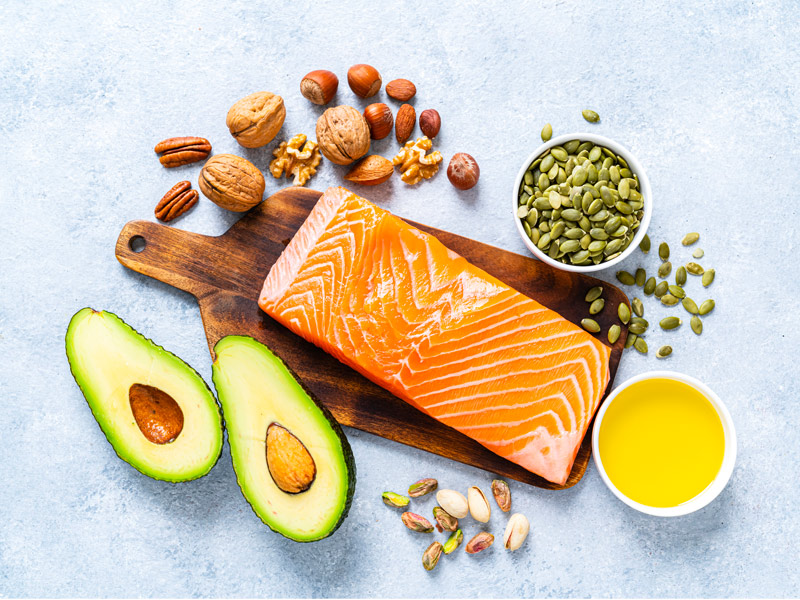Healthy fats you should be eating
Confused about good and bad fats? Dietitian Susie Burrell explains how to get the right balance of fats in your diet.
For years we have been told any fat in our diet is bad and should be avoided at all costs.
But more recently experts have discovered that good health is about getting the right mix of fats in our overall diet, rather than cutting out fat entirely.
What are the different types of fat?
There are two main types of fat:
Saturated fats
These are found in:
- Animal foods including meat and dairy
- Fried and processed foods such as biscuits, cakes and fast foods
Unsaturated fats
These are found in:
- Vegetable oils
- Nuts and seeds
- Avocado
Unsaturated fats include monounsaturated fats, polyunsaturated fats and omega-3 fats – which are primarily found in fish and are known to have a number of health benefits.
- Eat right: How processed foods make us fat
What is the ideal fat balance?
From a health perspective, the ideal mix of fats includes an equal amount of saturated, mono and polyunsaturated fats.
This means less processed polyunsaturated fats and more natural omega-3 fats.
This mix of fats has been shown to naturally reduce inflammation in the body, and helps ward off obesity, diabetes and heart disease.
How much fat do we need?
The average adult needs roughly 60-80g of fat each day.
Ideally we need to consume no more than 20-30g each of saturated, mono and polyunsaturated fats.
- Diet change: Could Omega-3s improve kids’ behaviour?
How to achieve the ideal fat balance
Bump up your intake of Omega-3
While all types of fish are good for us, salmon and sardines are particularly high in omega-3 fat.
Tuna is a good choice but canned tuna often has had the fat removed, so fresh salmon or tuna is a better option.
Aim to consume fish rich in omega-3 rich three to four times a week.
Snack on nuts once a day
A daily serve of nuts has been shown to support weight control and heart health long-term thanks to its rich nutrient profile.
Aim to get a range of nuts into your diet, as different varieties have varying nutritional properties.
Choose the right bread or crackers
Grain-based breads and crackers, especially soy linseed or chia loaves, can be a good source of the plant form of omega-3 fat.
If you can tolerate these foods, the grain varieties will ensure you get an extra serve of good fats every day.
Be fussy with added fats
We need very little added fat via oil or margarine in our diet.
As most vegetable oils or spreads are based on palm oil or blended vegetable oils, the best option is to cook with extra virgin olive oil, which is known for its high antioxidant content.
Use natural spreads such as avocado in place of processed margarine or butter blends.
Limit processed foods
Try to reduce your saturated and processed fat intake, which comes from fried takeaway foods and processed snacks such as biscuits, pastries and cakes.
Consume these foods once or twice a week at most.
Written by Susie Burrell.





